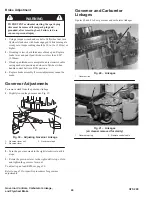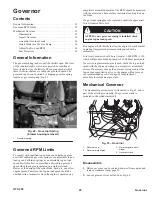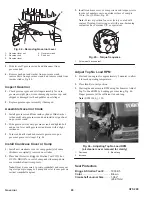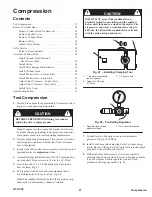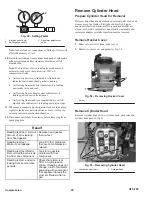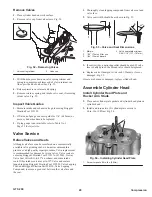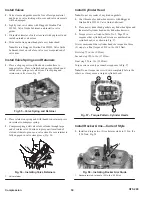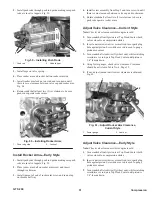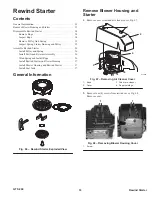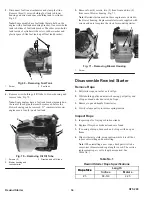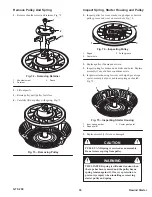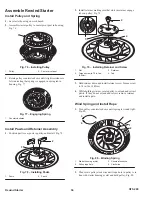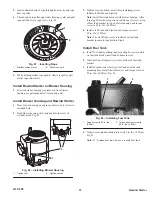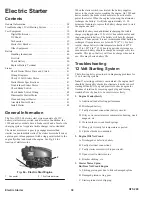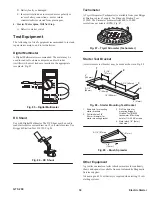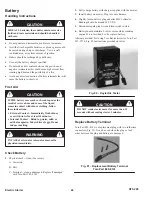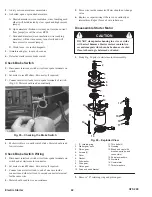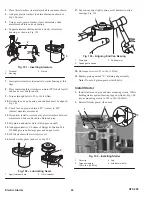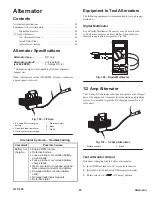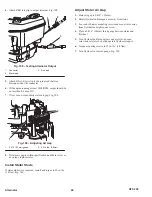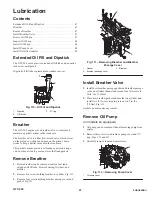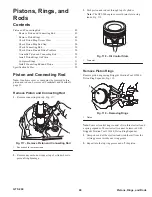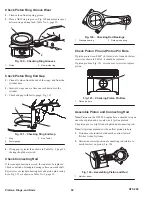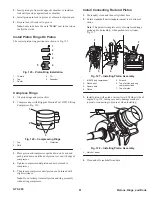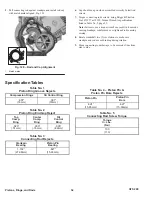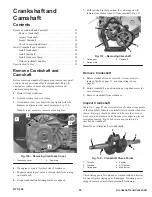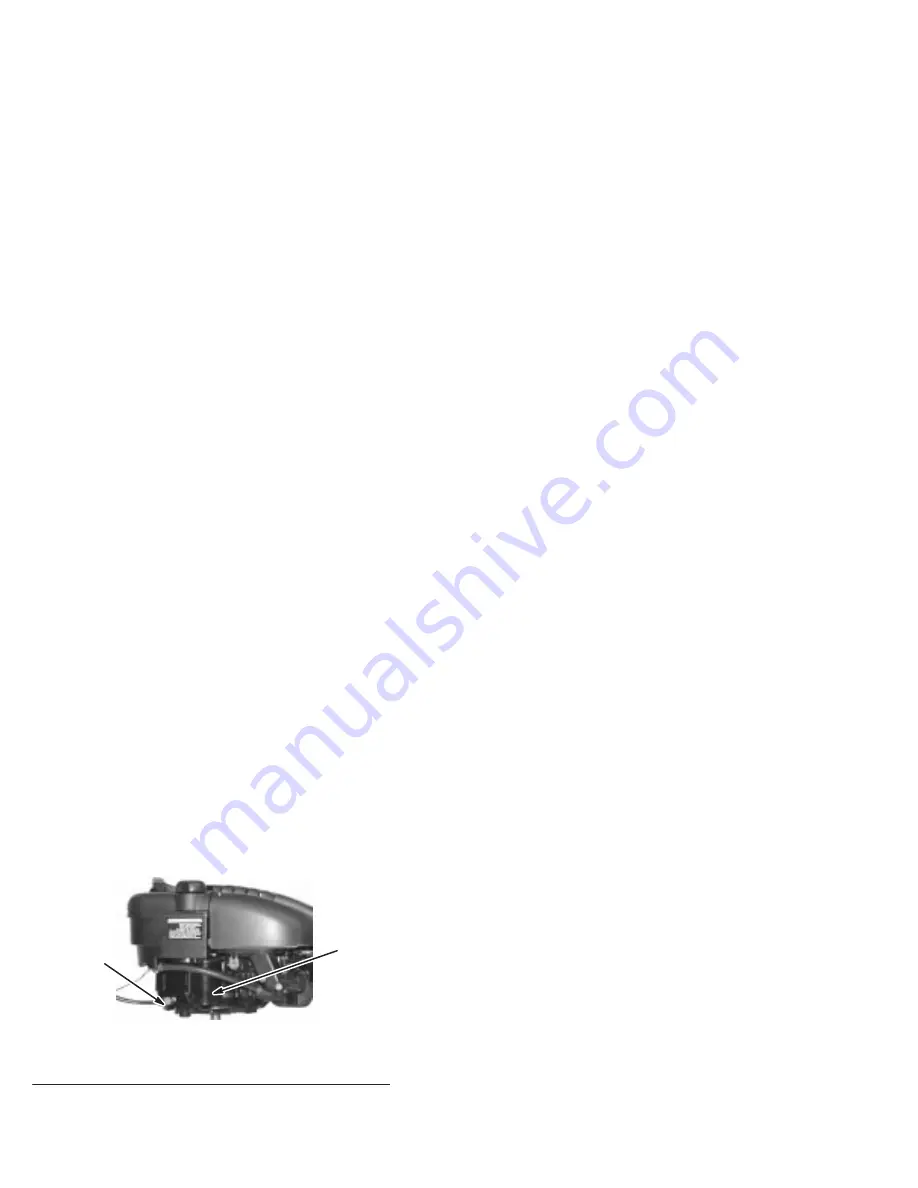
38
GTS 200
Electric Starter
Electric Starter
Contents
General Information
38
. . . . . . . . . . . . . . . . . . . . . . . . . . . . . . .
Troubleshooting 12 Volt Starting System
38
. . . . . . . . . . . . . .
Test Equipment
39
. . . . . . . . . . . . . . . . . . . . . . . . . . . . . . . . . .
Digital Multimeter
39
. . . . . . . . . . . . . . . . . . . . . . . . . . . .
DC Shunt
39
. . . . . . . . . . . . . . . . . . . . . . . . . . . . . . . . . . .
Tachometer
39
. . . . . . . . . . . . . . . . . . . . . . . . . . . . . . . . .
Starter Test Bracket
39
. . . . . . . . . . . . . . . . . . . . . . . . . . .
Other Equipment
39
. . . . . . . . . . . . . . . . . . . . . . . . . . . . .
Battery
40
. . . . . . . . . . . . . . . . . . . . . . . . . . . . . . . . . . . . . . . . .
Handling Instructions
40
. . . . . . . . . . . . . . . . . . . . . . . . .
First Aid
40
. . . . . . . . . . . . . . . . . . . . . . . . . . . . . . . . . . .
Check Battery
40
. . . . . . . . . . . . . . . . . . . . . . . . . . . . . . .
Replace Battery Terminal
40
. . . . . . . . . . . . . . . . . . . . . .
Starter
41
. . . . . . . . . . . . . . . . . . . . . . . . . . . . . . . . . . . . . . . . . .
Check Starter Motor Drive and Clutch
41
. . . . . . . . . . . .
Wiring Diagrams
41
. . . . . . . . . . . . . . . . . . . . . . . . . . . . .
Check 12 Volt Starter Motor
41
. . . . . . . . . . . . . . . . . . . .
Starter Motor Specifications
41
. . . . . . . . . . . . . . . . . . . .
Troubleshoot Starter Motor
41
. . . . . . . . . . . . . . . . . . . . .
Check Brake Switch
42
. . . . . . . . . . . . . . . . . . . . . . . . . .
Check Brake Switch Wiring
42
. . . . . . . . . . . . . . . . . . . .
Disassemble Starter Motor
42
. . . . . . . . . . . . . . . . . . . . .
Clean and Inspect Starter
43
. . . . . . . . . . . . . . . . . . . . . . .
Assemble Starter Motor
43
. . . . . . . . . . . . . . . . . . . . . . .
Install Starter
44
. . . . . . . . . . . . . . . . . . . . . . . . . . . . . . . .
General Information
The Toro GTS 200 electric start system consists of a 12V
battery, starter motor, switch, and alternator. In addition, the
1999 and newer models have a brake switch and a fuse for the
charging system. A separate trickle charger is also standard.
The starter motor uses a gear type engagement method,
similar to an automobile starter. The starter motor shaft drives
a pinion gear into engagement with a ring gear attached to the
engine flywheel and cranks the engine. See Fig. 84 for
location of starter motor.
1
2
Fig. 84 – Electric Start Engine
1.
Connector
2.
12 volt starter motor
When the starter switch is activated, the battery supplies
power to the starter motor, cranking the engine. On 1999 and
newer models, the brake switch must also be activated to
power the starter. When the engine is running, the alternator
recharges the battery. It will take approximately 15–20
minutes of running to replace the battery charge used to start
the engine one time.
Should the battery need additional recharging, the trickle
charger is plugged into a 120 volt AC household outlet, and
then connected to battery. The battery will be fully charged
within a 72 hour period. It is not recommended that battery be
recharged if temperatures are below 40
°
F (4
°
C). For best
results, charge battery within temperature limits of 40
°
F
(4
°
C) to 105
°
F (41
°
C). When long periods of storage are
encountered, battery should be charged overnight every two
months. This type of battery will lose its charge when not in
use. This may shorten battery life.
Troubleshooting
12 Volt Starting System
The following list is given to aid in diagnosing problems for
12 volt starting systems.
Note: If a starting problem is encountered, the engine itself
should be thoroughly checked to eliminate it as the cause of
starting difficulty. It is a good practice to check engine for
freedom of rotation by removing spark plug and turning
crankshaft over by hand, to be sure it rotates freely.
1. Engine Cranks Slowly
A. Additional load affecting performance.
B. Discharged battery.
C. Faulty electrical connection (battery circuit).
D. Dirty or worn starter motor commutator, bearing, weak
magnets, etc.
E. Worn brushes or weak brush springs.
F. Wrong oil viscosity for temperature expected.
G. Flywheel brake mis-adjusted.
2. Engine Will Not Crank
A. Discharged or defective battery.
B. Faulty electrical connections.
C. Faulty starter motor switch (open circuit).
D. Open circuit in starter motor.
E. Brushes sticking, etc.
3. Starter Motor Spins,
But Does Not Crank Engine
A. Sticking pinion gear due to dirt or damaged spline.
B. Damaged pinion or ring gear.
C. Starter pinion clutch slipping.

